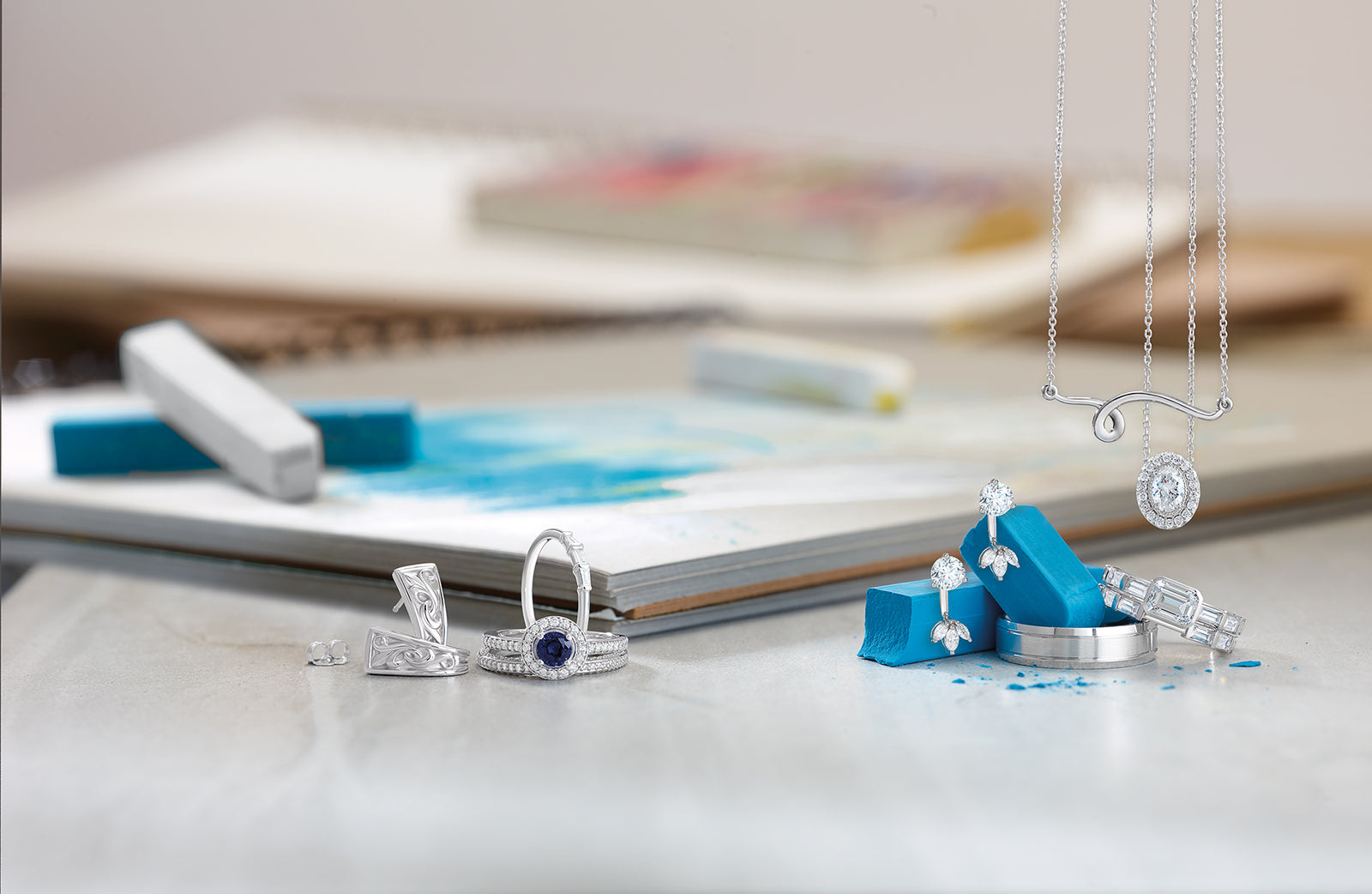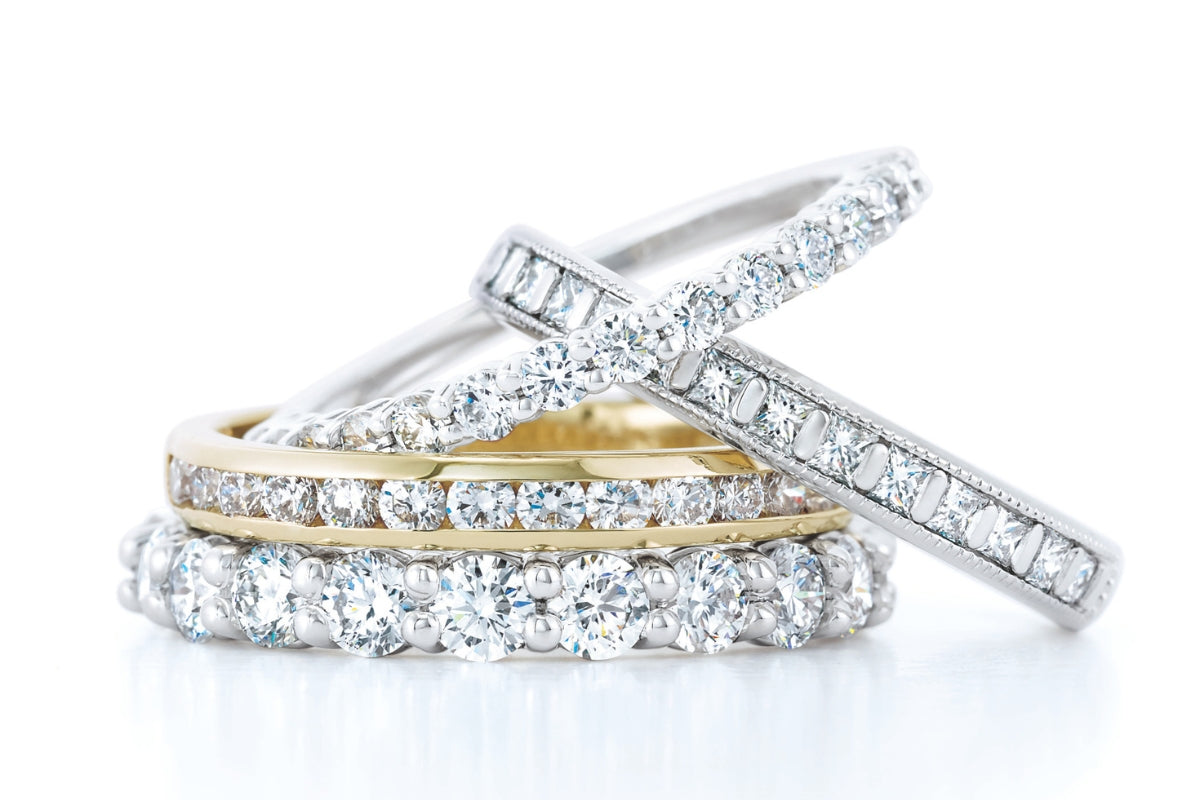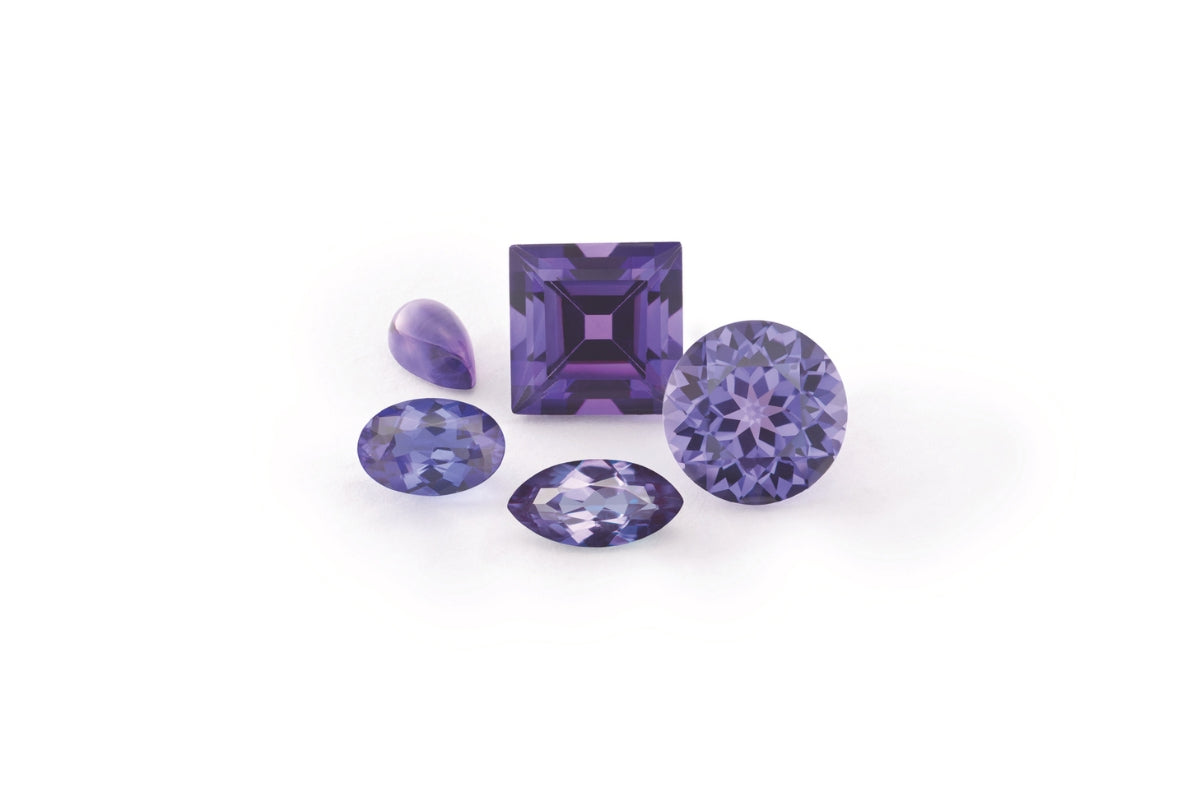It’s likely you’re familiar with the big three precious metals commonly found in fine jewelry: platinum, gold, and silver. These are very popular and long standing precious metals in the gem and jewelry industry. Why? Because gold and silver have been used in fine jewelry for centuries and have become a benchmark to compare all other alloys when used for fine jewelry.
Platinum is a relatively new discovery of the three precious metals mentioned above. This is important to realize, because palladium is a byproduct of mining for platinum. Side note, all Soha Diamond Co. precious metals including platinum, palladium, gold, and silver are all 100% certifed recycled.
According to GIA, “William Hyde Wollaston (1776 – 1828) discovered the elements palladium and rhodium in 1803. He named palladium after the asteroid Pallas which in turn was named after Pallas Athena, the Greek goddess of justice and wisdom.” In terms of origin, “South Africa and Russia are the two chief suppliers of palladium. It is a by-product from platinum mining, and is considered a rare metal.”
You may not come across Palladium often, as it is not commonly or readily available in pre-made stock, inventory, or ready-to-ship jewelry pieces at many jewelry stores. Also, like platinum, palladium has a very high melting point and creates challenges for jewelry manufacturers. National jewelry brands like to lower the barriers to making a sale, so selling a metal many people have never heard of or that takes additional education and resources to make isn’t something they’re willing to do.
Benefits of Palladium
- 950 Palladium is a Platinum Group Metal (PGM)
- It achieves the look and benefits of platinum at half the weight
- Palladium contains no nickel
- Hypoallergenic
- Lead-free
- Strong alloy that will not tarnish
- Requires no rhodium plating
- Premium bright white color that lasts
- It will never lose metal weight when polished
- Formulated to have the hardness of 14K gold
Next time you’re shopping for fine jewelry or considering a custom piece, you’ll know a bit more about Palladium and what makes it so unique. In recent years, there has been a significant increase in palladium prices due to global demand. Today, palladium prices are higher than platinum.




